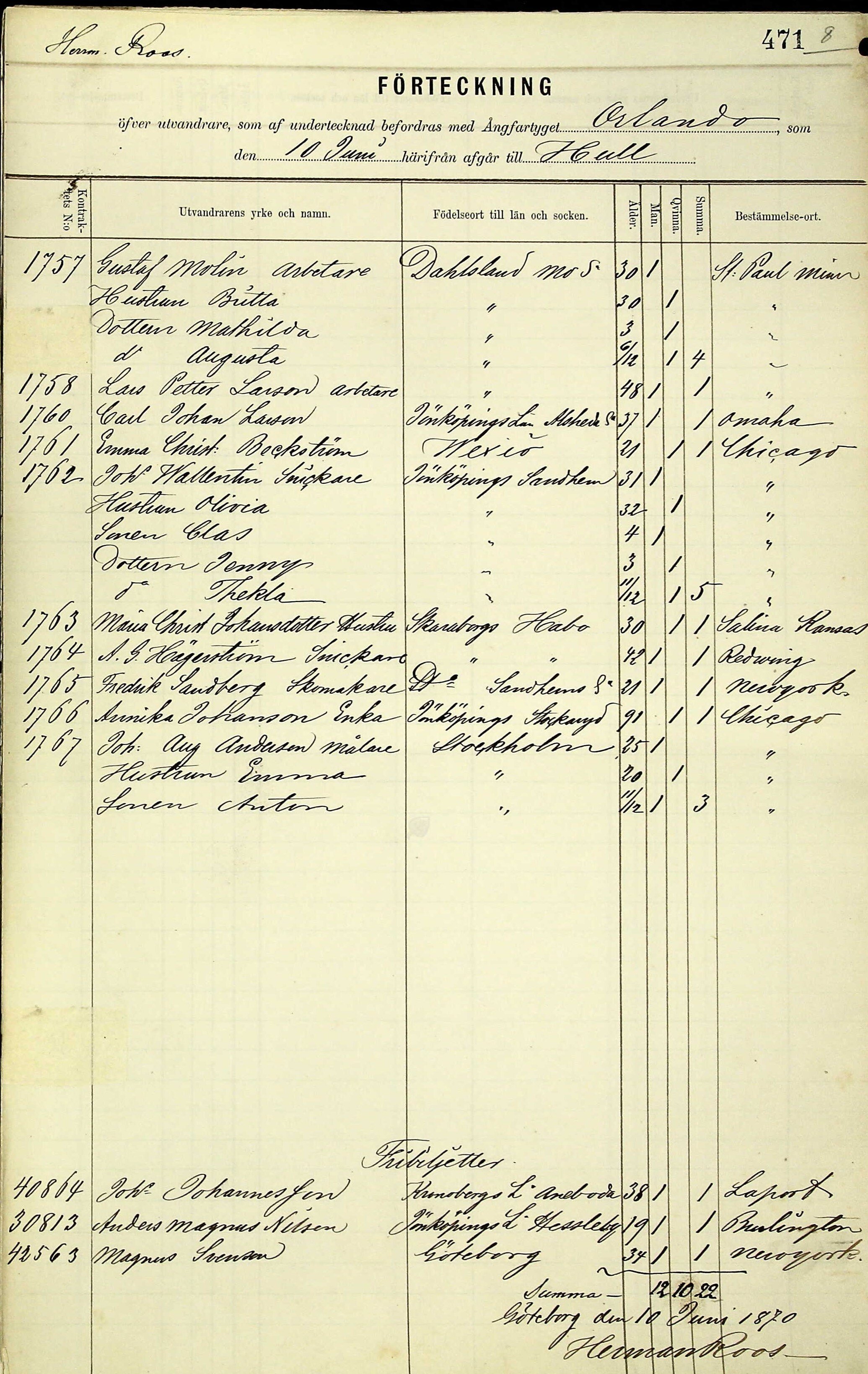How To Take Advantage Of Emigration Records To Uncover Family Stories
*This post may have affiliate links, which means I may receive commissions if you choose to purchase through links I provide (at no extra cost to you). All opinions remain my own.
You’ve probably used immigration records while working on your genealogy, but have you used emigration records?
Emigration records are a very useful, but underused resource for researching your ancestors that came to the United States (or other country).
In this article, I’ll discuss immigration vs. emigration records, the genealogical details you can find in emigration papers, and some online and offline resources to get your research started.
What are emigrants?
But first, what are emigrants?
An emigrant is someone who leaves their country to move to another country.
This could be for economic reasons, avoid war, join their family, or a host of other reasons.
Emigration vs. immigration records
Immigration records track people coming into the United States (or other country). US immigration records include things like passenger lists and naturalization records.
Emigration records document people who leave their home countries to permanently move to another.
Although not as commonly used as immigration records, many countries kept emigration records about those who left to start a new life in the US or elsewhere. These can be valuable in discovering where people were from, who they were traveling with, and their destination. You can learn exactly when your family left their home country and the port they sailed from.
Essentially, a person can be both an emigrant and an immigrant depending on where they are in their journey.
Related Posts:
How to Add to Your Family Tree With Passport Applications
4 Resources For US Canada Border Crossing Records
What You Should Know About Alien Registration Files
Genealogical information in emigration records
There are different types of emigration records that you can use for your family history research, from passenger lists to church records to police files.
What is available will be different for each country and the time your ancestors left.
Because of this, what you can learn from departure records can vary.
Generally, they name the emigrant’s:
Age
Place of origin
Destination country
Ship name
Departure date
Depending on the source, you may also discover your ancestor’s:
Birthdate
Occupation
Marital status
Physical description
A specific destination (like Chicago), sometimes with an exact address
Last residence, including exact addresses
Parents’ names
Children’s names and birthplaces
Siblings’ names and residences in the US
Whether they didn’t show for military service
Number of people on their ship
Shipping company name
Because these are created in the person’s country of origin, they are in that respective language, but some websites have transcribed the records into English.
If you need help narrowing down the timeframe of when your family arrived and where they were from, try this US census immigration worksheet and pull together all the hints in one place.
Related Posts:
Where to find emigration records for the USA
There generally aren’t any central databases for records of emigrants leaving a country, even within that country itself. They’re scattered all over the internet, in archives, and in books.
Emigration resources often have a specific focus, like emigrants from a certain city or region.
Here is a sampling of 10 emigration resources you can find online:
1) The University of Aberdeen has a database for Scotland emigration records. You can sometimes identify the village the emigrant was from in these lists.
2) The Immigrant Ancestors Project is using departure documents from throughout Europe to track birthplaces. The database has emigrants to places all over the world, not only the US.
3) The Irish Emigration Database is an archive of original primary material, like letters, related to Irish going to North America. The original Irish emigration records have been digitized and transcribed and are searchable, making this a good resource for Irish genealogy .
4) The Digital Danish Emigrant Archive (in Danish) has the Copenhagen Police Emigration Protocols. There are over 367,000 Danish emigration records, as well as for some Swedish emigrants, who bought a ticket through travel agents in Copenhagen
5) The National Library of Scotland has a database of emigrants’ correspondence, sent from abroad back home to Scotland.
6) Rootsdigger has extensive lists of people who left Schleswig-Holstein in the 19th century. These are rich in genealogical information, like the names of parents and children and where their siblings lived in America.
7) A great German emigration database is the Cuxhaven, Lower Saxony, Emigrant Database. Although it is in German, it gives many details, like the date and place of birth, parents’ names, and where they were emigrating to.
8) Emigrants from Lippe to the USA (in German) has an index of German emigration records with details like who they were traveling with and where they were from.
9) Ancestry has many collections and is especially strong in German and Swedish emigration records.
A few examples are:
- Sweden, Emigration Registers, 1869-1948
- Bremen, Germany, Passenger Lists Index, 1907-1939*
- Irish Emigrants in North America, 1775-1825*
This record shows the exact cities people from Gothenburg, Sweden were traveling to in 1870.
10) FamilySearch also has a lot of great collections, including many from Germany and Sweden.
A few examples are:
Personregister över invandrare från Sverige till New York 1851-1869 (emigrants to New York)
Emigrantprotokoller, 1852-1923 for Norway emigrants
Conditional emigration permits of Chinese laborers and domestics, 1893- 1897
Although a lot of these records are geared toward Europeans, some are also available for Asian emigrants. This shows a Chinese conditional labor permit.
Offline emigration resources
Besides many websites, there are some great books with emigrant resources out there.
Here are some offline sources for you to explore:
- How to Find Your Ancestors in German Records
- Irish Emigration Lists, 1833-1839
- Nineteenth-Century Emigration from Kreis Simmern (Hunsrueck), Rheinland-Pfalz, Germany to Brazil, England, Russian Poland, and the United States of America
- Emigrants from France (Haut-Rhin Department) to America. Part 1 (1837-1844) and Part 2 (1845-1847)
- Emigrants from Fellbach (Baden-Wuerttemberg, Germany), 1735-1930
- An Alphabetical Index to Ulster Emigrants to Philadelphia, 1803-1850
Related Posts:
How To Use Italian Vital Records on FamilySearch
9 Books To Energize Your French-Canadian Genealogy Research
Final thoughts
Although not used as often or as widely available, emigration records can give you even more details about your family than immigration records!
If you’re able to locate your ancestor, you can learn precious facts like the exact town (or parish) they came from and where family members lived in the US.
To help you narrow down when your forebears arrived so you can focus on a time period to search, try using a US census immigration worksheet and round up all the clues in one easy place.
Have you used emigration resources in your genealogy research? What did you learn from them?
Need help tracing your immigrant ancestors? Let’s work together!



